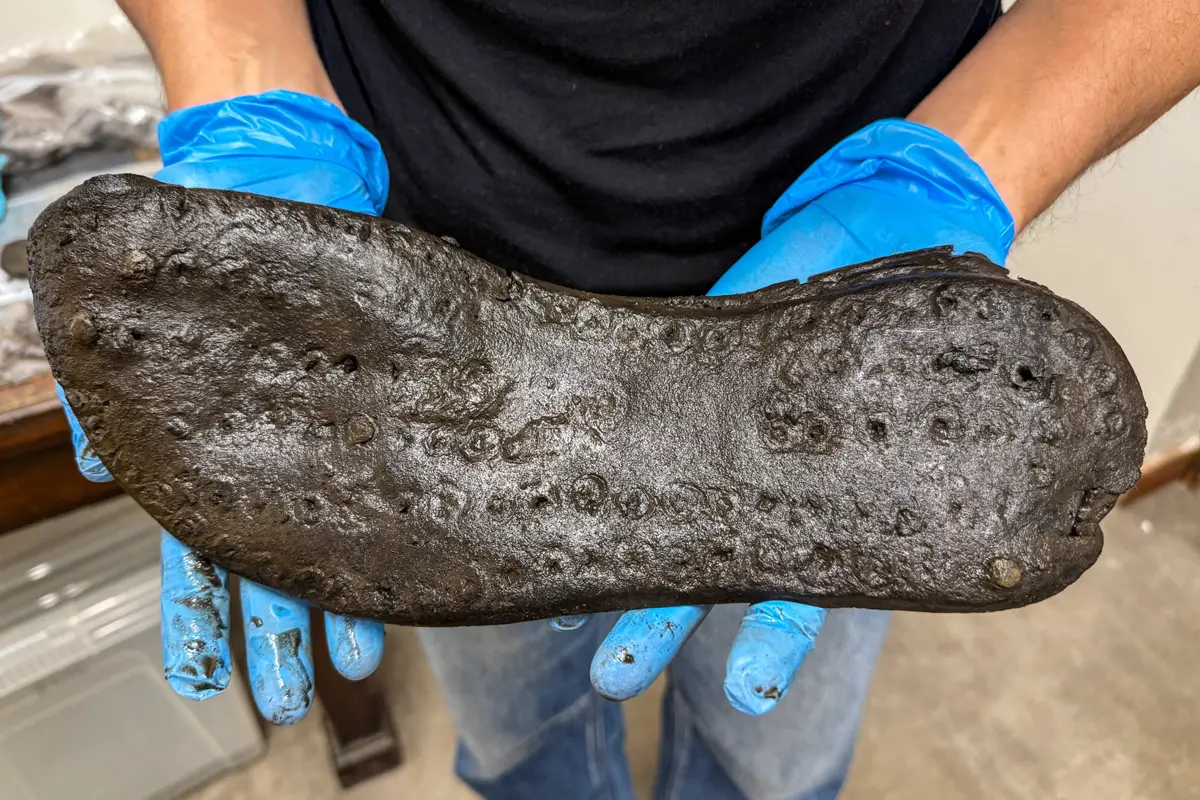Magna, also known as Carvoran, is a Roman fort situated at the edge of the Whin Sill in Northumberland, England.
The fort predates the construction of Hadrian’s Wall, strategically located on the frontier to protect the junction of the Maiden Way with the Stanegate.
Magna was garrisoned between AD 85 and AD 122, which included the First Cohort of Syrian Archers, the Second Cohort of Dalmatians, the First Cohort of Batavians, and legionaries from the Second Augusta and the Twentieth Valeria Victrix.
As part of a five-year excavation project by the Vindolanda Charitable Trust and supported by The National Lottery Heritage Fund, excavations at Magna have unearthed a cache of 32 shoes dating back nearly 2,000 years.
The shoes, consisting of sandals, children’s shoes, and military footwear, were found in the fort’s northern defensive ditches and preserved in semi-anaerobic low-oxygen conditions. What makes the discovery unusual, is the exceptional size of some of the shoes, including one that measures 32.6 cm’s in length.
According to the Roman Arm Museum & Magna Fort, 25% of the shoes recovered are classed as xx-large (30cm+). In comparison to the shoes found at Vindolanda, only 0.4% are in the same size category, with the average shoe size being a smaller 24-26cm in length.
Dr Elizabeth Greene, Associate Professor at the University of Western Ontario, said: “I think there is something very different going on here at Magna, even from this small sample uncovered it is clear that these shoes are much larger on average than most of the Vindolanda collection”.
Dr Greene noted that “although we are comparing this new Magna collection, which has yet to go through the conservation process, with the Vindolanda shoes that have, even after accounting for a maximum shrinkage of up to 1 cm (10 mm), these shoes are still exceptionally large.”
Header Image Credit : Roman Arm Museum & Magna Fort
Sources : Roman Arm Museum & Magna Fort





